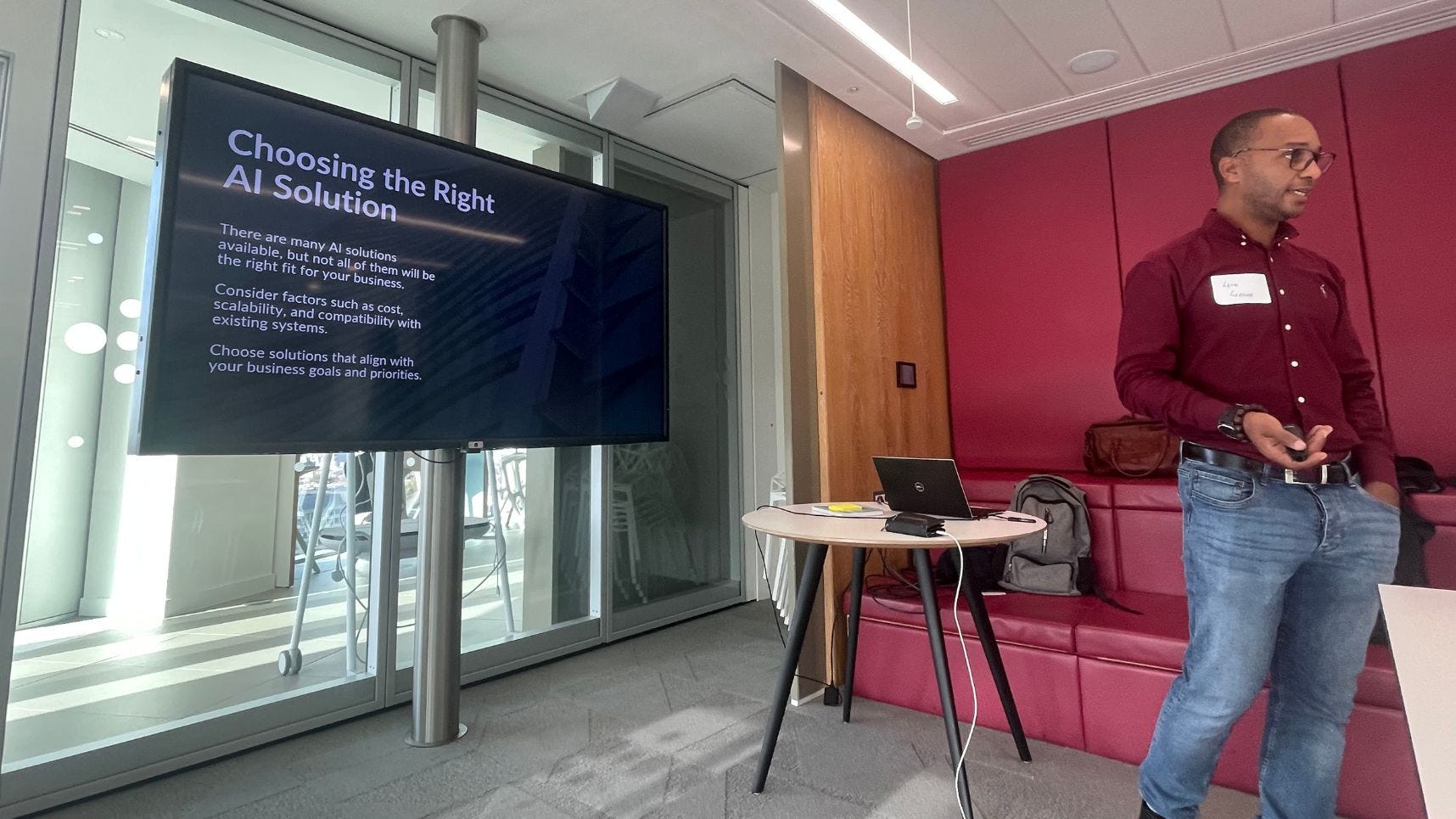Implementing AI: 3 Takeaways from AI in Practice Training
AI training day sees experts explore ways to improve data practices and develop multistakeholder organizational strategies

At a Glance
- Experts at an AI training event highlighted key steps to implementing AI including tailoring approaches to business needs.
- Also covered were ways to improve data management and create an adaptable strategy with multistakeholder input.
The rush to implement AI in the wake of ChatGPT and the generative AI wave has seen businesses attempt to reposition themselves in a bid to stay competitive globally.
At a training event approved by the UK Government's Office for Artificial Intelligence and hosted by Informa Tech, the parent division of AI Business, and The AI Summit London, experts from different industries came together to discuss and explore potential approaches to implementing AI.
Among the takeaways were three practical considerations:
There’s no one-size-fits-all approach. Identify what processes fit your business, its needs and the needs of its customers. Also, consider your risk appetite, but be mindful.
Good data usage comes from good data management. Work towards improving and aligning processes and approaches on governance, security and biases.
Adopt an approach that’s adaptable, easy to define and able to refer back to. Create a cross-functional approach that allows for multistakeholder input that works towards your goals across the organization but is easy to adapt when new solutions or problems arise. Getting the C-suite on board is hard but a necessary part.
The session was led by Leon Gordon, founder and CEO of Onyx Data (pictured below). He said that everyone should have a data and AI strategy in place.
“It's here to stay and we need to we need to embrace it, but in a structured, secure and governed way.”

1. No one-size-fits-all approach
Throughout the event, conversations flowed not on how to build systems, but on how organizations should position themselves to best prepare to effectively implement them.
Organizations from small to large attended, reaching a consensus that not every approach would suit everyone. Recognizing a business’s maturity is the best way to work out where it is in its data journey.
What might work for a large corporation may not apply to a startup. Attendees outlined their experiences from experiments and use cases and the group talked through potential opportunities and technical approaches to takeaway for their own work.
Gordon said: “AI can be adopted across industries, across functionalities and has a plethora of use cases available across the board. But it's not a one-size-fits-all approach.
“You have to be mindful of where your business is going, what the appetite for risk is of the organization and potentially doing proof of concepts (POC) as opposed to overarching, fully encompassing projects. Go for that POC which delivers, delivers well in time, at a good cost and then use that as the flagship to go across the organization to build out your bigger projects.”.
2. Good data usage comes from good data management
Attendees undertook assessments to explore their wider approaches to using data. They encompassed four components:
Data management
Ethics and biases
Data quality
Data governance and security
The group discovered that, as referenced in point one, not one single data strategy works for every business, but the business benefits are clear for those who take the time to develop a data-driven culture.
A major point that arose was that using spreadsheets to house and manage data could be determinantal to a business’ effectiveness. But Gordon pointed out that not all spreadsheets are bad.
“We've seen them be bad before but generally it's because there's no validation involved, or you’re not marking mandatory fields,” he said.
“In the backup strategies as well as disaster recovery, a lot of organizations don't have that in place on their spreadsheet solutions, which is where a lot of this a lot of problems come in.”
Another major headache for data strategies uncovered in the training sessions was collating sources of siloed data. Such a process, it was argued, would help make it more secure and easier to comb for issues or bad-quality inputs.
Gordon told attendees that it was "fundamental" that everyone in organizations was working from an all-encompassing and curated central repository of data.
“Too often we see with silos is that the business tends to become internally competing, rather than working together moving forward,” he added.
3. Adopt an approach that’s adaptable and easy to define
Some attendees contended that when it came to stakeholder input in defining an effective strategy, some C-suite executives may not care what was under the hood of a product, so long as it drives an effective outcome.
The concept proposed during the training event for an effective data strategy, however, was a cross-functional approach that allows for multistakeholder input. The C-suite doesn't have to be in every meeting from day one but should have input on what goes in and define the strategy.
The training sessions showcased a four-step strategy for crafting an effective data strategy:
Define
Assess
Identify
Assemble
Gordon explained that this four-step method enables a holistic approach that allows for input into the solution. The resulting approach defines, aligns and prioritizes efforts and can be applied to AI, data intelligence and even business intelligence strategies.
He said: “Everybody has a thirst and the desire for AI-driven solutions, which means having these conversations to begin with is fairly easy. Turning them into tangible solutions that bring business value is the difficult part and getting the executive team to agree on what those solutions should look like and what those projects should look like, again, is where we come in using our using our matrix to enable that to happen.
“Once you have the executive level on board, it becomes an easier conversation to have across functions and with different stakeholders because we're already buying into the business goals.”
The AI training in practice events continue this week and more will follow in 2024.
About the Author(s)
You May Also Like




.jpg?width=700&auto=webp&quality=80&disable=upscale)
.jpg?width=300&auto=webp&quality=80&disable=upscale)
.jpg?width=300&auto=webp&quality=80&disable=upscale)
.jpg?width=300&auto=webp&quality=80&disable=upscale)
.jpg?width=300&auto=webp&quality=80&disable=upscale)
.jpg?width=300&auto=webp&quality=80&disable=upscale)